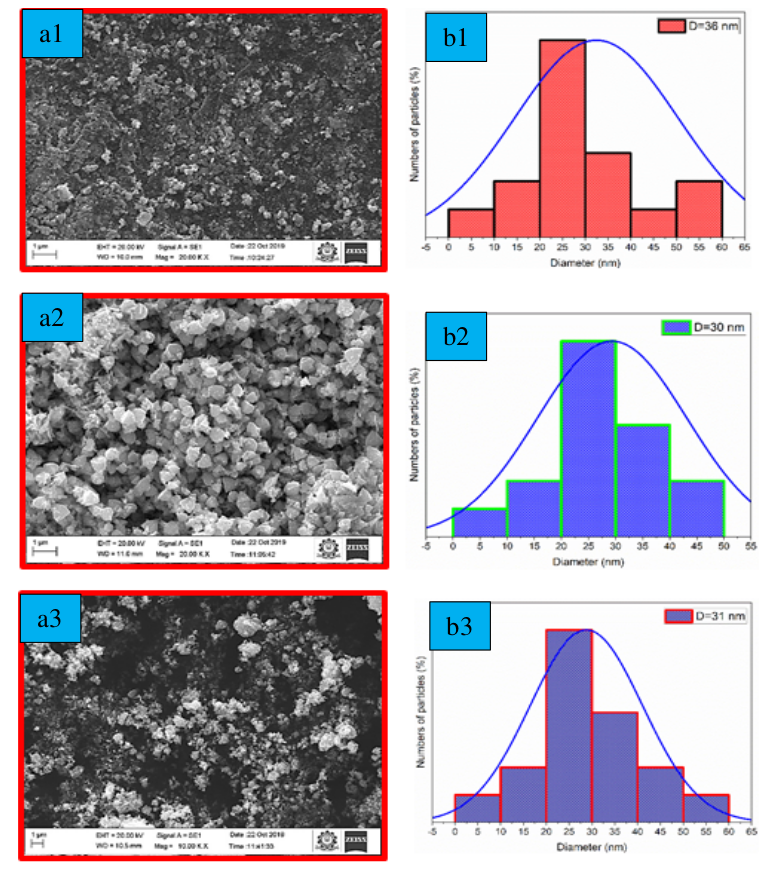Effect of temperature on optical, structural, morphological and antibacterial properties of biosynthesized ZnO nanoparticles
Keywords:
Nanoparticles, Ocimum sanctum, ZnO, SEM, DLS, AntibacterialAbstract
Nanomaterials can be produced by using nontoxic biological compounds that are both eco-friendly and economically viable. Temperature dependent ecological synthesis of ZnO nanoparticles was carried out with leaf extract of Ocimum sanctum. An electron microscope study confirmed that a temperature of 400 oC was optimal for the formation of ZnO nanoparticles generated by biosynthesizing ZnO nanoparticles. The normal crystalline size of biosynthesized ZnO nanoparticles calculated via XRD analysis are found to be 18, 12 and 17 nm for 300 - 500 oC, respectively. The direct optical band gap energy deducted from Tauc approximation range to be 3.32-3.20 eV. In SEM analysis, depending on the temperature of the synthesis conditions, different ZnO morphologies are also found. Functional groups analysis confirmed the incidence of carboxyl and amide groups in the O. sanctum leaf extract. The ZnO nanoparticles analysed at room temperature using photoluminescence, a broad visible band is observed around 382 nm for all samples. Furthermore, this study determines that the synthesized ZnO nanoparticles provide antimicrobial efficacy against clinical strains of Bacillus subtilis and Staphylococcus aureus, as well as against standard strains of Escherichia coli. Several fields, including cosmetics and pharmaceuticals, can benefit from biosynthesized nanoparticles.

Published
How to Cite
Issue
Section
Copyright (c) 2022 G. Kamarajan, D. Benny Anburaj, V. Porkalai, A. Muthuvel, G. Nedunchezhian

This work is licensed under a Creative Commons Attribution 4.0 International License.







